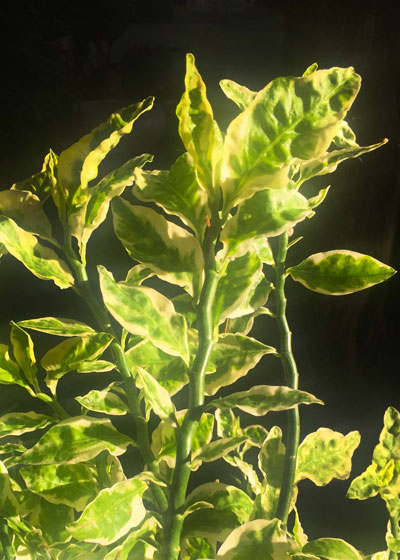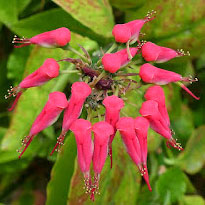Devil’s backbone/Redbird cactus

I’ve been growing this plant for more than 60 years. I kinda like it, but I guess you could tell that. It’s easy, and it brightens dark landscaping corners in summer. Plus, it complements the other succulents in my greenhouse in winter. It’s easy, and it has very few problems.
Let me sum it up…
Here are the simple facts about this nice little plant.
• Scientific name (it’s melodious – try saying it.): Pedilanthus tithymaloides.
• Common names (among others):
Devil’s backbone (because of the zigzag pattern of its stem growth); redbird cactus (because the small flowers resemble cardinals in color and form, even though it’s not even distantly related to cacti).
• Plant family: Euphorbiaceae. That means it’s a sister to poinsettias.
• Native home: Florida through the Caribbean to Venezuela.
• Hardiness Zone: Think tropical (Zone 10.) Do not expose it to freezing weather. Unless you’re in Deep South Texas or right on the Gulf Coast, this plant needs to be grown in a pot so you can bring it indoors during freezing weather.
• There are two types, the green species, and ‘Variegatus’ with leaves with white variegation as shown in my photo.
• Variegated leaves may take on a pink shade in cool weather. That’s normal and no cause for concern.

• Flowers have been rare (as in “never”) for my plants in pots. I see reports that the plants bloom more commonly when they’re grown outdoors in tropical areas.
• Potting soil should be lightweight and highly organic but containing 10 to 15 percent expanded shale, both for aeration and to provide ballast for the top-heavy plants.
• The plants are tolerant of somewhat dry soils, but they will drop leaves and quit growing if they are allowed to get extremely dry.
• Avoid direct sunlight in summer, but a bright, shady location will be fine. Winter sun coming in a window or into a greenhouse will be perfect.
• Propagation is by stem cuttings 3 inches long stuck into 4-inch pots filled with the same potting soil. The latex sap that will seep from the cuttings is reported to be poisonous by the highly respected Missouri Botanical Garden.
